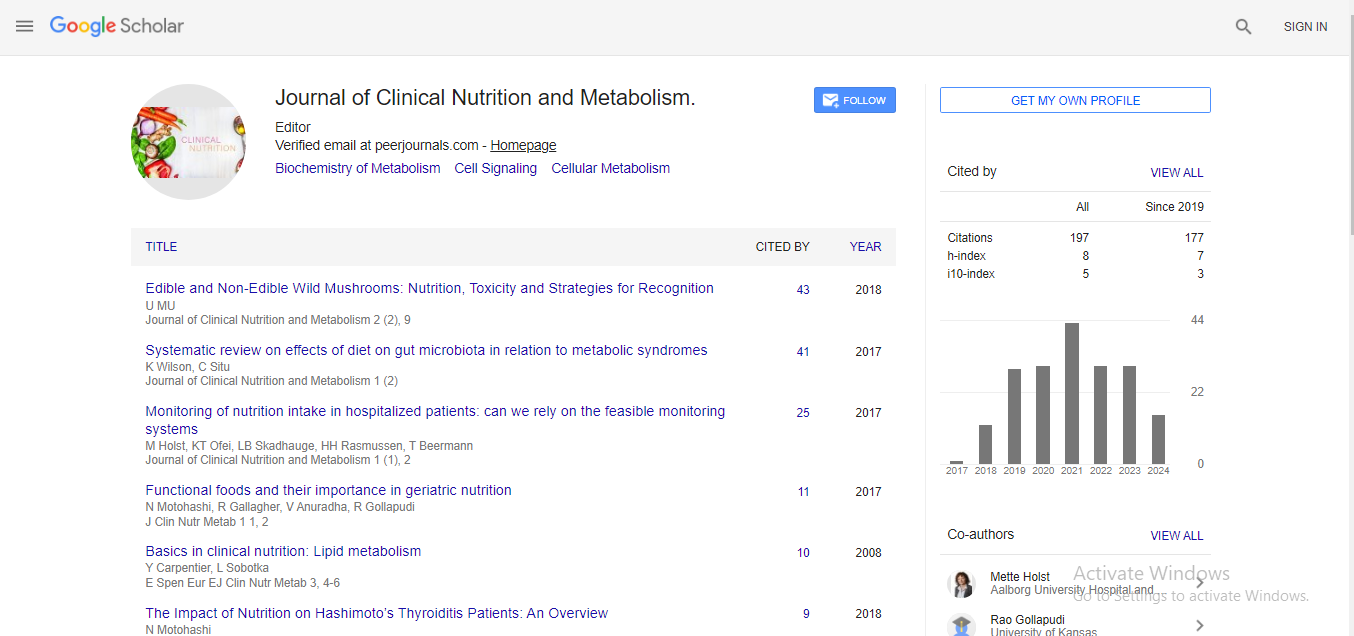Perspective, J Clin Nutr Metab Vol: 5 Issue: 4
A Trans-Metabolism of Native Biochemistry
Pablo I. Nikel*
Department of Biochemistry, Technical University of Denmark, Denmark
*Corresponding Author:
Pablo I. Nikel
Department of Biochemistry, Technical University of Denmark, Denmark
E-mail: pabnik@biosustain.dtu.dk
Received Date: June 03, 2021; Accepted Date: July 14, 2021; Published Date: July 21, 2021
Citation: Nikel PI (2021) A Trans-Metabolism of Native Biochemistry. J Clin Nutr Metab 5:4. 123.
Copyright: © All articles published in Journal of Clinical Nutrition and Metabolism are the property of SciTechnol, and is protected by copyright laws. Copyright © 2021, SciTechnol, All Rights Reserved.
Abstract
The itinerary followed by Pseudomonas putida from being a soil-dweller and plant colonizer bacterium to become a flexible and engineer-able platform for metabolic engineering stems from its natural lifestyle, which is adapted to harsh environmental conditions and every one varieties of physicochemical stresses. Over the years, these properties have been capitalized biotechnologically attributable to the expanding wealth of genetic tools designed for deep-editing the. Putidagenome. a set of dedicated vectors inspired within the core tenets of synthetic biology have enabled to suppress many of the naturally-occurring undesirable traits native to the current species while enhancing its many appealing properties, and also to import catalytic activities and attributes from other biological systems
Keywords: Metabolic Engineering, Synthetic Biology, Orthogonal metabolism, Bacterial chassis, Microbial cell factories
The itinerary followed by Pseudomonas putida from being a soil-dweller and plant colonizer bacterium to become a flexible and engineer-able platform for metabolic engineering stems from its natural lifestyle, which is adapted to harsh environmental conditions and every one variety of physicochemical stresses. Over the years, these properties have been capitalized biotechnologically attributable to the expanding wealth of genetic tools designed for deep-editing the. Putidagenome. a set of dedicated vectors inspired within the core tenets of synthetic biology have enabled to suppress many of the naturally-occurring undesirable traits native to the current species while enhancing its many appealing properties, and also to import catalytic activities and attributes from other biological systems. Much of the biotechnological interest on P. putidastems from the distinct architecture of its central carbon metabolism. The native biochemistry is of course geared to get reductive currency NA that makes this bacterium an exceptional host for redox-intensive reactions. In some cases, genetic editing of the indigenous biochemical network of P. Putida (cis-metabolism) has sufficed to get target compounds of industrial interest. Yet, the most value and promise of this species (in particular, strain KT2440) resides not only inits capacity to host heterologous pathways from other microorganisms, but also altogether artificial routes (trans-metabolism) for creating complex, new-to-Nature molecules variety of examples are presented for substantiating the value of P. Putidaas one among the favourite workhorses for sustainable manufacturing offline and bulk chemicals within the current times of the 4th historic period. The potential of P. Putidato extend its rich native biochemistry beyond existing boundaries is discussed and research bottlenecks to the present end also are identified. These aspects include not just the innovative genetic design of recent strains but also the incorporation of novel chemical elements into the extant biochemistry, additionally as genomic stability and scaling-up issues. A quick search in the relevant literature reveals that several microbial hosts have been considered and used for applications in metabolic engineering. However, to date, no single, naturally-isolated bacterial strain seems to possess all the characteristics that would be desirable in an optimal host. Although the emerging picture indicates that the selection of an adequate bacterial platform will largely depend on the application intended, the adoption of a flexible and robust bacterium as the basis for developing a functional chassis, amenable to genetic and metabolic manipulations and endowed with high catalytic performance across a variety of operating conditions is definitely desirable. As hinted in the Introduction, soil bacteria in general, and P. putidain particular, could satisfy many of these requirements because of the physic chemical conditions they face naturally in the niches in which they thrive. These conditions include a somewhat continuous exposure to environmental contaminants, often together with all sorts of physicochemical stresses and competing as well as predatory microbial species. Many environ-mental bacterial species are widely recognized by their versatile, flexible metabolic lifestyles, which allow them to adapt to rapidly changing conditions (e.g., contact with oxidative stressors, temperature challenges, and sudden osmotic perturbations). As indicated in the section below, P. putida serves as a prime example of these qualities.
 Spanish
Spanish  Chinese
Chinese  Russian
Russian  German
German  French
French  Japanese
Japanese  Portuguese
Portuguese  Hindi
Hindi 